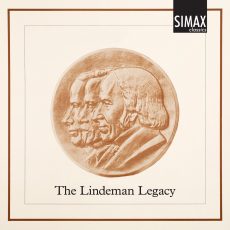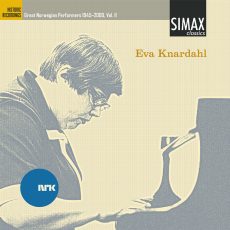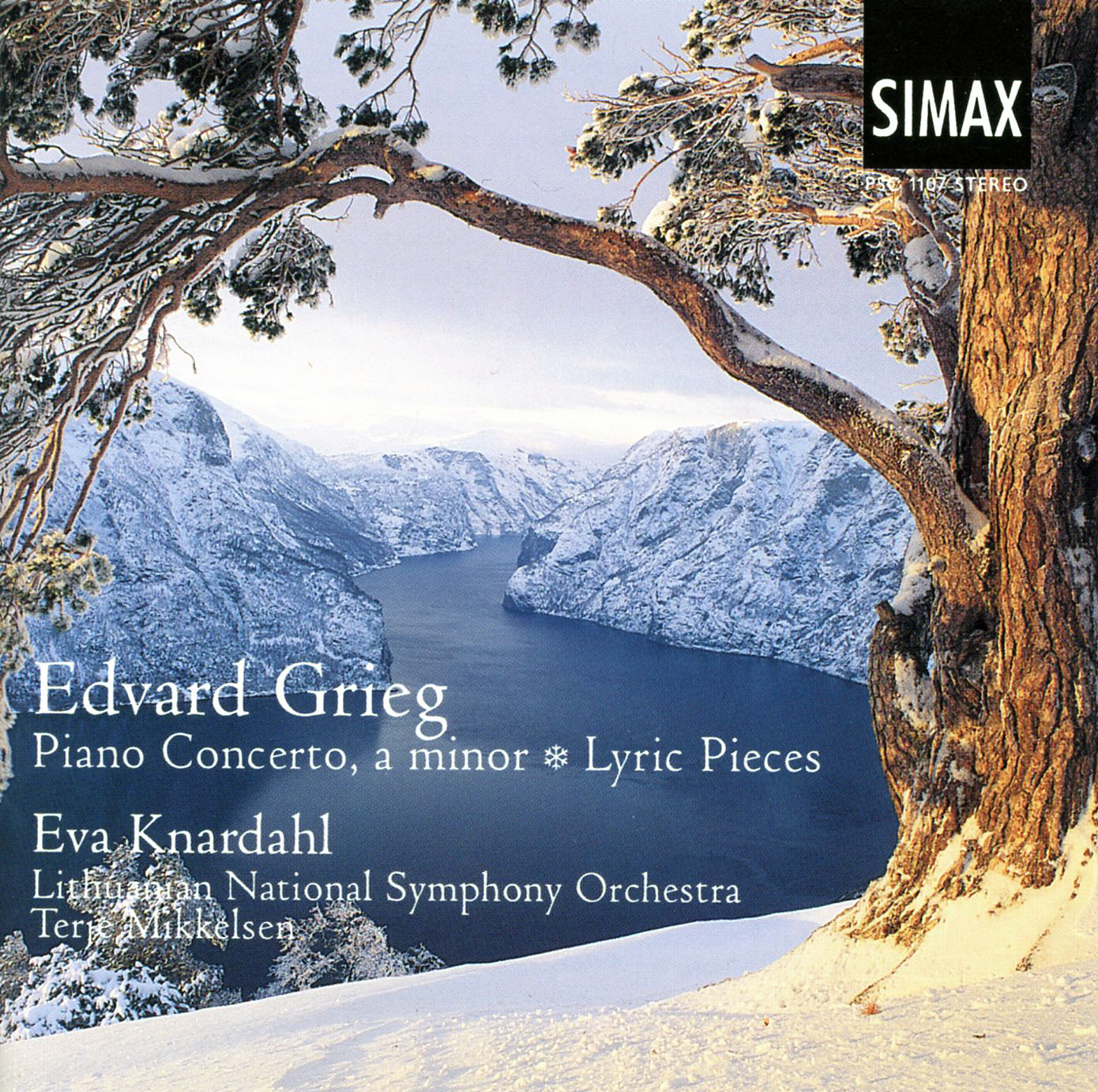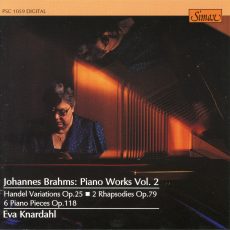One of the most notable musicians in post-war Norway, Eva Knardahl was a vibrant and spirited figure in the music life of the nation, performing, participating in public debate, and involving herself as a member of various boards and committees. She was justly referred to as a breath of fresh air, both with regard to the richness of her musical expressivity, and to the manner in which she ardently defended her views. Studies and first public performance Eva Knardahl gave…
One of the most notable musicians in post-war Norway, Eva Knardahl was a vibrant and spirited figure in the music life of the nation, performing, participating in public debate, and involving herself as a member of various boards and committees. She was justly referred to as a breath of fresh air, both with regard to the richness of her musical expressivity, and to the manner in which she ardently defended her views.
Studies and first public performance
Eva Knardahl gave her official début recital at the age of eleven and immediately came to the attention of the Norwegian public. In fact she had performed in public some five years previously, and rumours of her exceptional talent had already spread. Her début concert, featuring no less than three piano concertos, made it abundantly clear, however, that hers was a unique gift.
Eva Knardahl was a pupil of Ragnhild Agerup, Ivar Johnsen and Mary Barratt Due; it was the last of these three she considered to be her most influential teacher. She liked to point out that Mrs Due’s background from having studied in Rome made her somewhat special. Her approach, choice of repertoire and ability to meet the needs of a young and spirited pianist led her to become Eva Knardahl’s favourite teacher. Mrs Due also had access to a considerable body of southern European music, which Eva Knardahl always enjoyed and felt a particular affinity towards.
In 1947, at the age of twenty, Eva Knardahl moved to the USA. By that time she was already well known in Norway and the rest of Scandinavia, and in France. She settled in Minneapolis and in 1952 she took up the post of pianist in the Minnesota Symphony Orchestra. In addition to performing the orchestral repertoire she made a favourable impression as a chamber musician and as a soloist, and was widely considered to be the foremost pianist in that part of the United States.
Her decision in 1965 to return to Norway was directly encouraged by the conductor Karsten Andersen. He had been touring in the USA with the Bergen Philharmonic Orchestra when he met Eva Knardahl in Minneapolis; he pointed out to her that there were new and better opportunities for a solo performing career in Norway than there had been at the time of her departure. This had a decisive influence on her decision to move back.
New times
The time following Eva Knardahl’s return to Norway may be divided into two periods, from 1965 to 1984 when she performed as a pianist, and from 1984 to 1994 when she held the post of professor in chamber music at the Norwegian Academy of Music.
Eva Knardahl conquered – literally – the domestic music arena on her return from the USA. Her extensive repertoire, capacity for learning and musical temperament made her a highly sought-after performer, and she was soon looked upon as one of the best. Within a relatively short space of time she had appeared as a soloist with all the orchestras in Norway. She gave solo recitals, played chamber music and was a skilled accompanist. She also performed abroad, particularly in Scandinavia, and accepted occasional engagements elsewhere.
Soloist
Eva Knardahl was musically omnivorous, which entailed a considerable capacity for work, and the taking on of challenging tasks. She gave performances of, for example, Klaus Egge’s three piano concertos with the Bergen Philharmonic Orchestra under the baton of Karsten Andersen. Ventures such as this revealed her genuine interest in promoting new works; other performances of new music included Magne Amdahl’s Konsert for klaver og orkester, Johannes Rivertz’ Spill og dans in an arrangement by Egil Monn-Iversen, Sverre Jordan’s Concerto Piccolo for piano and orchestra, Halfdan Cleve’s Konsert for klaver og orkester, and Halvard Johnsen’s piano suite Frå Nordmøre.
Eva Knardahl’s repertoire included concertos by Brahms, Beethoven and Mozart; Grieg’s A minor concerto also featured regularly in her programmes. In Minneapolis she performed the concerto every seventeenth of May, Norway’s national day, with the Minnesota Symphony. Sparks would fly when she performed Alberto Ginastera’s piano concerto. The modern American piano tradition was very much in her veins; performances of Leonard Bernstein’s Symphony no. 2 The Age of Anxiety bore proof of that. Her versions of Domenico Scarlatti’s sonatas forged links back to her studies with Mary Barratt Due, and her interpretation of Isaac Albeniz’ Suite Espanola, which she performed on the occasion of her fiftieth anniversary as a pianist in 1989, revealed a leaning towards the music of this part of Europe. Eva Knardahl’s recordings of the complete works of Edvard Grieg for solo piano on the BIS label were sensational when they came out in the mid 1970s. She was a leading interpreter of Grieg’s music; her final recording, released in 1996, featured Grieg’s A minor concerto and a selection of his Lyric Pieces.
Professor
In 1984 Eva Knardahl became the first-ever professor of chamber music at the Norwegian Academy of Music. Some may well have been surprised at her choice of discipline, but for her it was an inevitable choice to make. She had always had an active relationship with those colleagues she played with. And in this area also her substantial repertoire and considerable experience made her a natural centre of attention among the students.
She brought together instrumentalists and singers, played together with them, helped organise concerts, and was intent on giving up-and-coming musicians invaluable experience of performing in public. Her strengths lay in the breadth of her repertoire, her ability to inspire, her dedication to her subject, and her ardent desire that everyone should succeed. Therefore she did not stick rigidly to her teaching timetable – students and colleagues alike would be contacted by her throughout the week, day and night. Music was most important; skill and competence in the subject could only be nurtured through unstoppable and consistent work
After ten years as professor, and in the year she reached sixty-seven, Eva Knardahl decided to retire. She maintained a certain level of activity as a performer, touring, for instance, with the Norwegian National Ballet in 1996. As time went by she felt that she had done her part. Eva Knardahl died in September 2006, a good six months before she would have turned eighty.
Idar Karevold
(Translated by Andrew Smith)

The Lindeman Legacy
Eva Knardahl
Eva Knardahl
Eva Knardahl
Grieg Piano Concerto and Lyric Pieces
Eva Knardahl
Brahms Piano Music Vol. 1
Eva Knardahl
Brahms Piano Music Vol. 2
Eva Knardahl